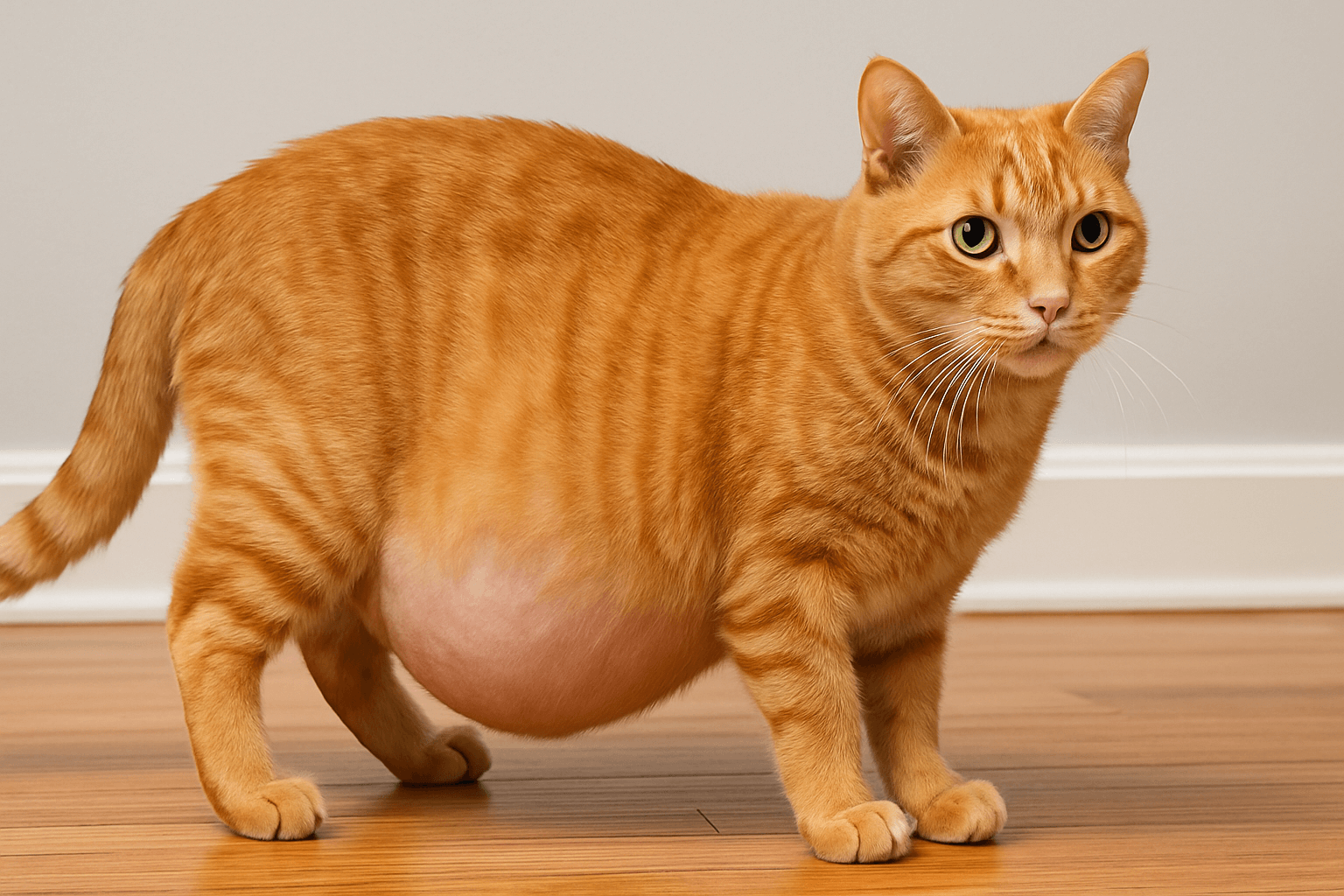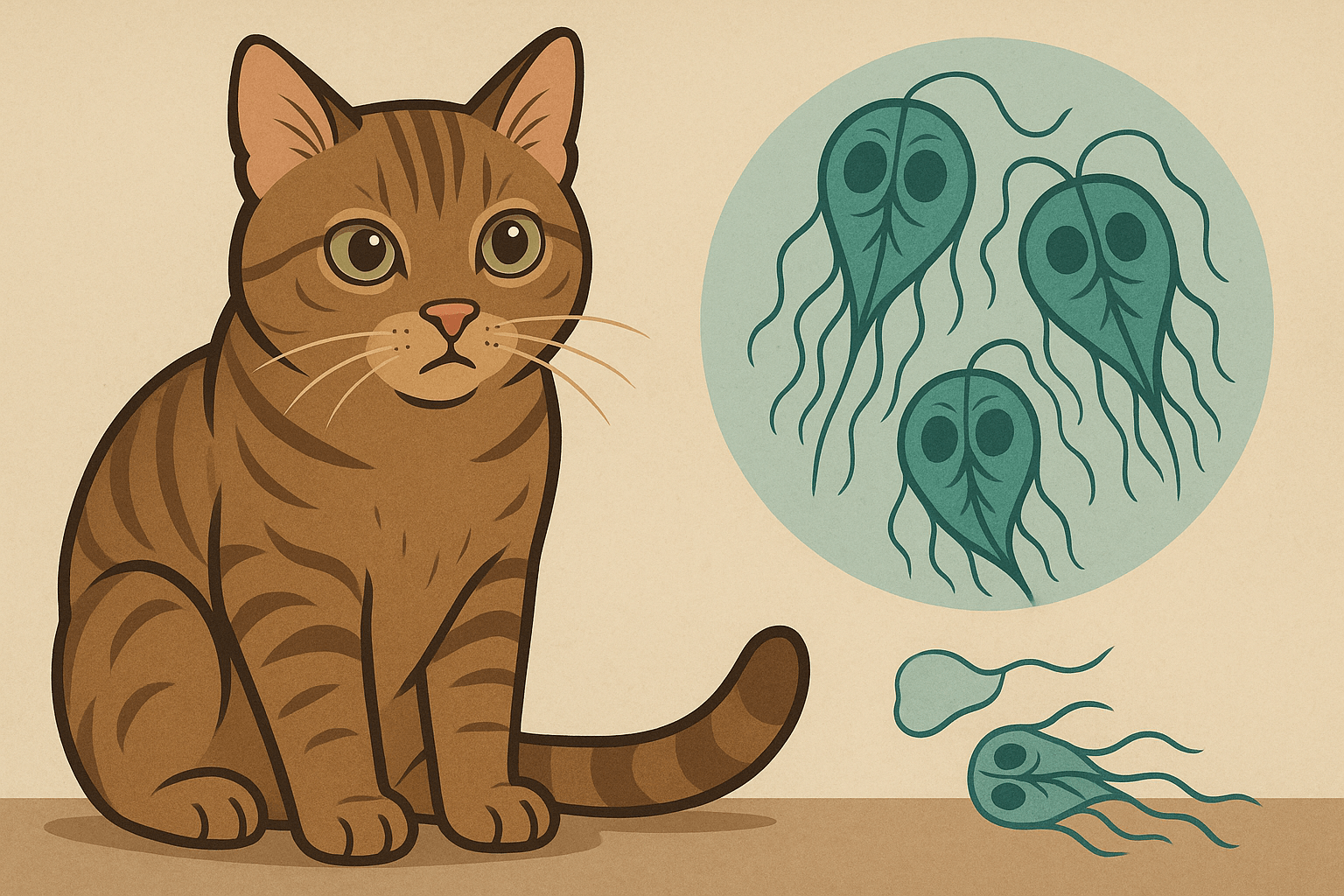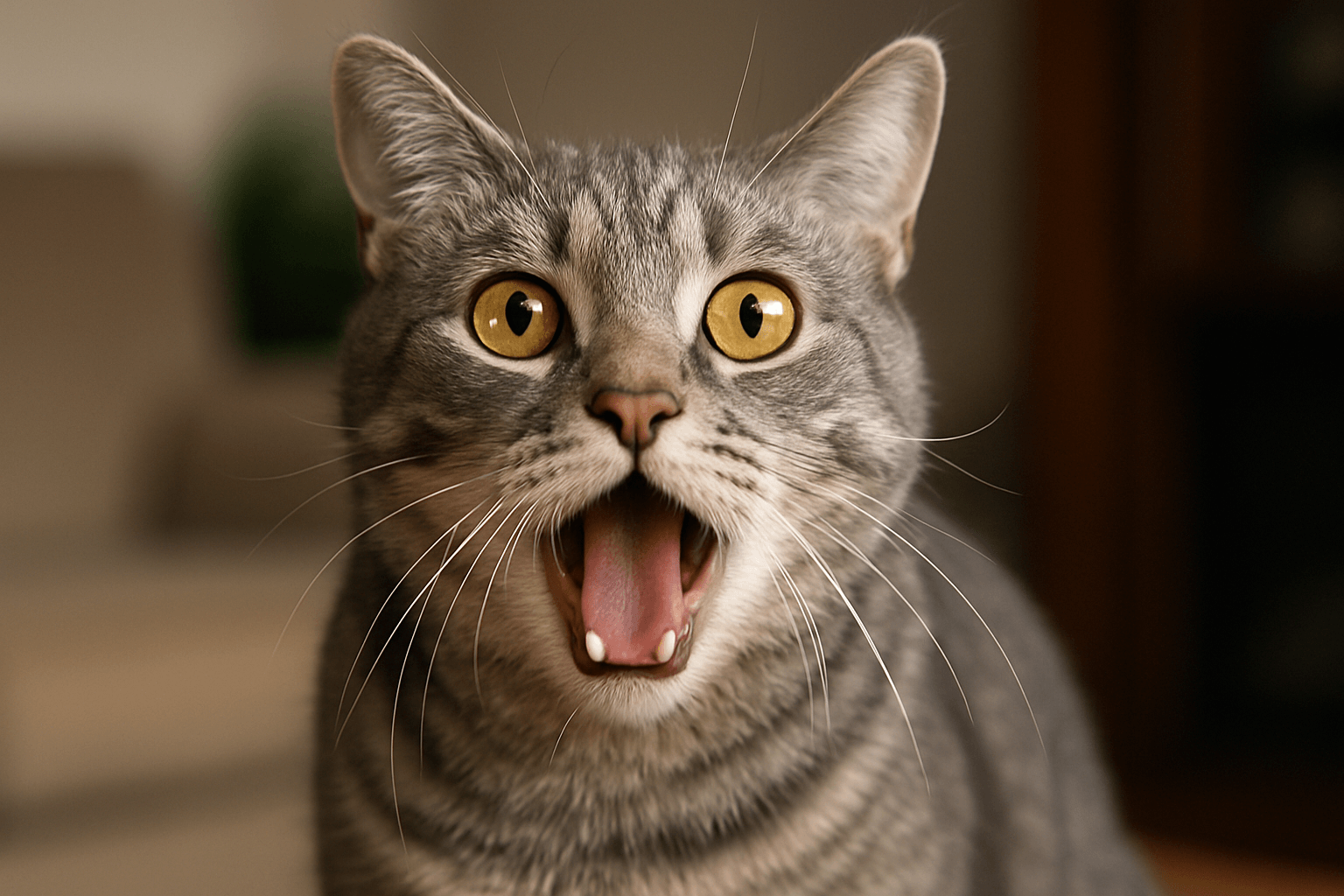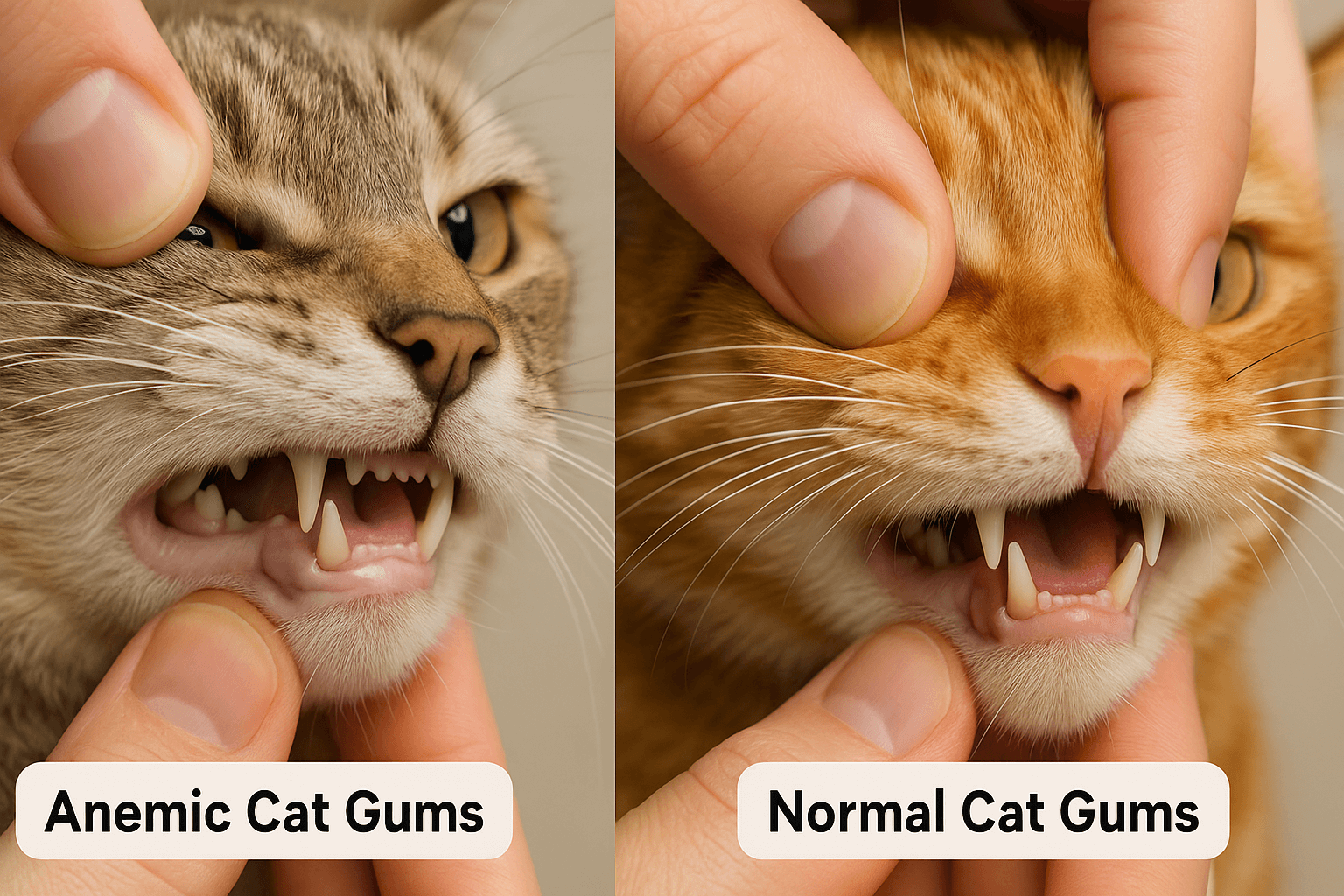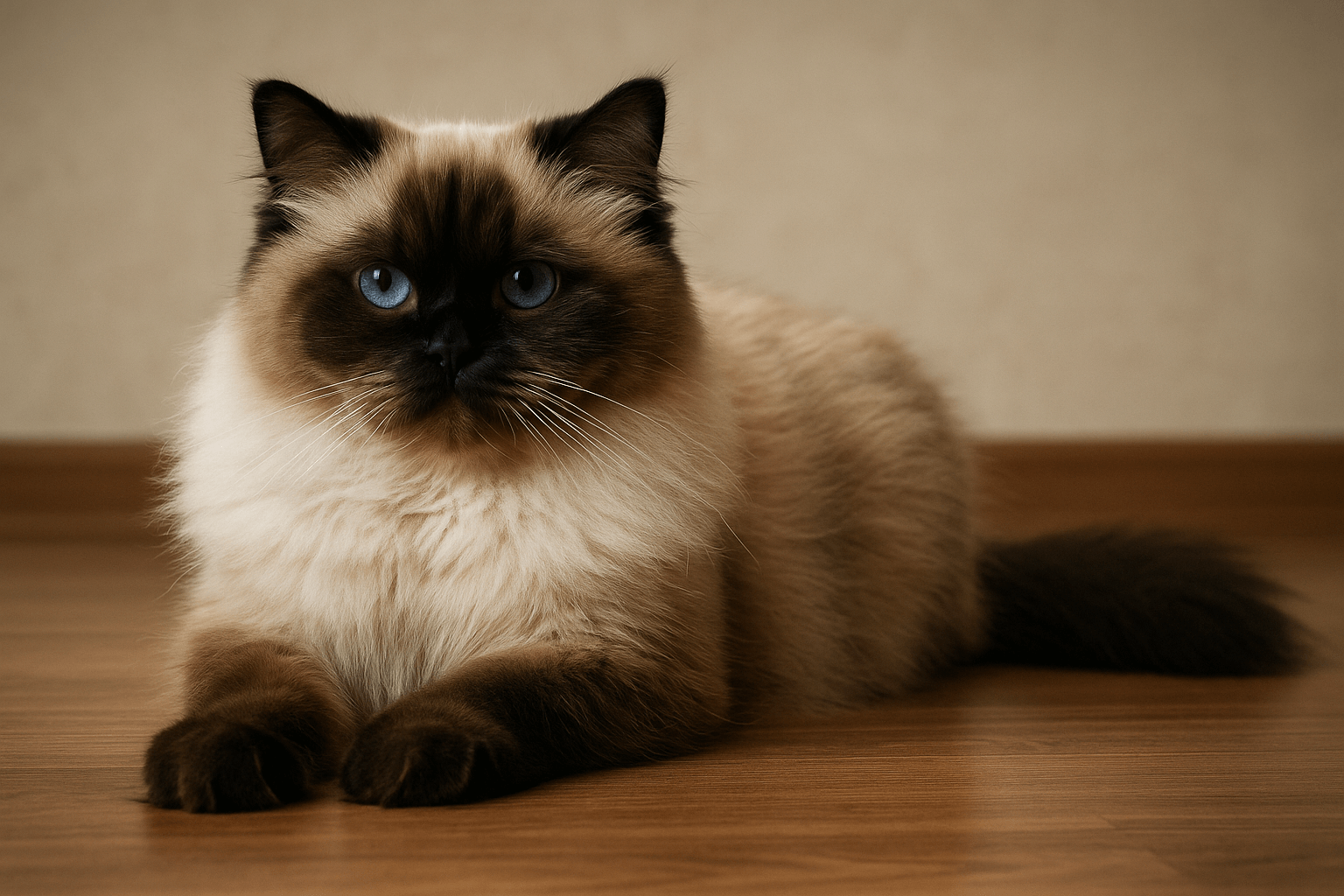Cat Primordial Pouch Swollen: What You Need to Know
If you’ve noticed a swollen area on your cat’s belly, it might be related to their primordial pouch—a loose flap of skin that runs along their underside. While this feature is entirely normal for many cats, any unusual swelling or changes in its appearance can raise concerns. Understanding the difference between a healthy primordial pouch and potential health issues is crucial for ensuring your feline friend stays happy and healthy. In this guide, we’ll explore the causes, symptoms, and solutions for a swollen primordial pouch, helping you address this topic with confidence and care.
What Is a Primordial Pouch, and Why Does It Swell?
The primordial pouch is a natural part of a cat’s anatomy, but when it appears swollen, it may indicate an underlying issue. Here are some common reasons why your cat’s primordial pouch might look enlarged.
Weight Gain:
Excess fat deposits can accumulate around the abdomen, making the primordial pouch appear larger than usual.Fluid Retention:
Conditions like ascites (fluid buildup in the abdomen) can cause swelling in the belly area, including the primordial pouch.Injury or Trauma:
A swollen pouch could be the result of bruising, inflammation, or internal damage caused by an accident or rough play.Parasitic Infections:
Parasites such as worms can lead to bloating or swelling in the abdominal region, affecting the appearance of the pouch.Underlying Health Issues:
Diseases like feline infectious peritonitis (FIP) or tumors may cause abnormal swelling in the abdomen.
Identifying the root cause of the swelling is essential for determining the appropriate course of action. Always consult a veterinarian if you notice significant changes in your cat’s body.
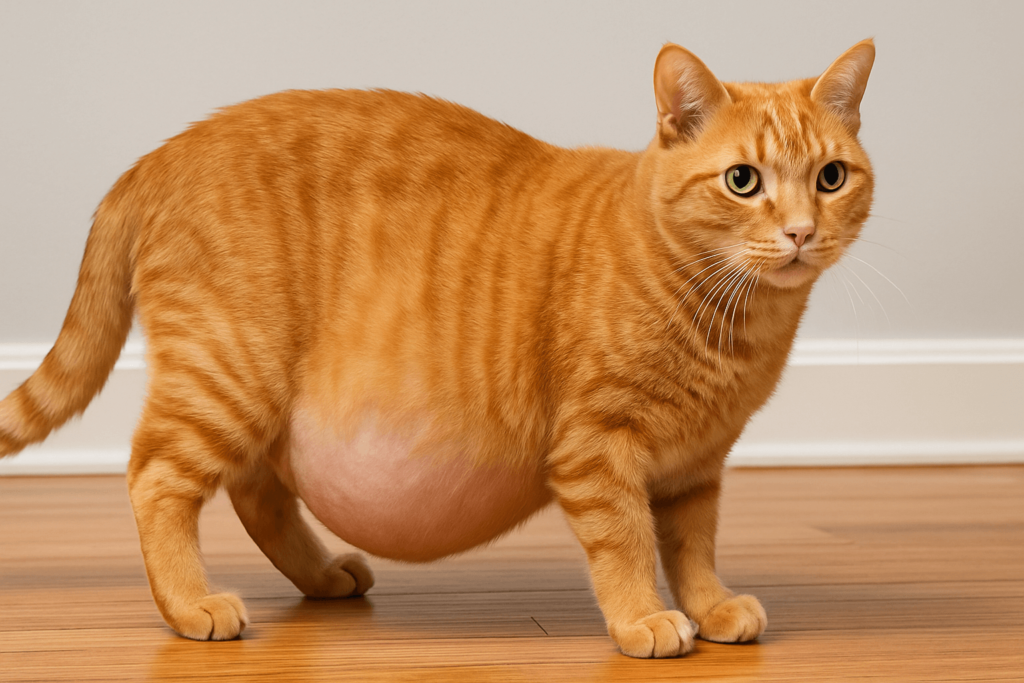
Signs That Your Cat’s Swollen Primordial Pouch Requires Attention
While a swollen primordial pouch isn’t always a cause for alarm, certain signs indicate that further investigation is necessary. Pay close attention to these red flags.
Visible Discomfort:
If your cat seems restless, avoids being touched, or shows signs of pain when lying down, it could signal an issue.Changes in Appetite:
A sudden loss of appetite or refusal to eat may accompany abdominal swelling and indicate a serious condition.Lethargy or Weakness:
Cats with swollen abdomens who seem unusually tired or uninterested in activities may need urgent veterinary care.Vomiting or Diarrhea:
Digestive issues paired with a swollen pouch could point to gastrointestinal problems or infections.Difficulty Breathing:
Swelling that presses on the diaphragm can make it hard for your cat to breathe comfortably, requiring immediate attention.
Recognizing these symptoms early allows you to seek timely medical intervention and ensure your cat receives proper treatment.
Check this guide 👉The Curious Case of the Cat Belly Button: Best 7 Expert Tips
Check this guide 👉Cat Losing Hair on Belly: Best 7 Expert Tips!
Check this guide 👉My Cat Loves Belly Rubs: Best 7 Expert Tips!
Normal Characteristics of a Primordial Pouch | Signs of Abnormal Swelling |
|---|---|
Loose, flexible skin under the belly | Hard, firm, or tender areas in the pouch |
Present in both male and female cats | Noticeable weight gain or bloating |
Helps protect vital organs during fights | Fluid retention or distended abdomen |
More prominent in certain breeds (e.g., Bengals) | Redness, warmth, or visible wounds |
Moves freely with the cat’s movements | Persistent swelling that doesn’t resolve |
How to Care for Your Cat’s Primordial Pouch
Proper care and monitoring can help maintain your cat’s overall health and prevent issues related to their primordial pouch. Follow these tips to keep your cat comfortable and safe.
Regular Vet Check-Ups:
Schedule routine veterinary visits to monitor your cat’s weight, abdominal health, and overall well-being.Monitor Weight Changes:
Keep an eye on your cat’s body condition to prevent obesity, which can affect the appearance of the pouch.Provide a Balanced Diet:
Feed your cat high-quality food tailored to their age, activity level, and dietary needs to support optimal health.Check for Parasites:
Regular deworming treatments and flea prevention can reduce the risk of parasitic infections causing swelling.Observe Behavioral Changes:
Any shifts in behavior, such as increased aggression or hiding, should be investigated promptly.
By staying proactive, you can catch potential problems early and ensure your cat remains healthy and happy.
Treatment Options for a Swollen Primordial Pouch
If your cat’s primordial pouch is swollen due to an underlying issue, several treatment options may be available depending on the diagnosis. Here’s what to expect.
Medication for Infections:
Antibiotics or anti-inflammatory drugs may be prescribed to treat bacterial infections or inflammation.Dietary Adjustments:
Switching to a low-calorie diet or specialized food can help manage weight-related swelling.Surgical Intervention:
In cases of tumors, hernias, or severe trauma, surgery might be necessary to address the problem.Fluid Drainage:
For conditions like ascites, veterinarians may drain excess fluid from the abdomen to relieve pressure.Parasite Treatment:
Deworming medications or topical treatments can eliminate parasites contributing to bloating or swelling.
Each treatment plan will depend on the specific cause of the swelling, so consulting your vet is essential for accurate diagnosis and care.
Common Causes of Abdominal Swelling in Cats
Abdominal swelling in cats can stem from various sources, not all of which involve the primordial pouch. Understanding these causes helps narrow down potential issues.
Intestinal Blockages:
Foreign objects lodged in the intestines can cause bloating and discomfort, often leading to visible swelling.Hernias:
Herniated tissue protruding through weak abdominal muscles can create localized swelling near the pouch area.Liver Disease:
Liver dysfunction can result in fluid accumulation in the abdomen, impacting the pouch’s appearance.Kidney Problems:
Chronic kidney disease may lead to dehydration and imbalances that contribute to abdominal swelling.Tumors or Growths:
Benign or malignant masses within the abdomen can press outward, altering the shape of the pouch.
Identifying the source of swelling requires professional evaluation to rule out life-threatening conditions.
Preventive Measures to Avoid Swelling
Prevention is key to maintaining your cat’s abdominal health and minimizing the risk of primordial pouch swelling. Here are practical steps you can take.
Maintain a Healthy Weight:
Encourage exercise and portion control to prevent obesity, which can strain the abdomen.Schedule Routine Deworming:
Regular parasite prevention reduces the likelihood of bloating caused by intestinal worms.Inspect for Injuries:
After outdoor adventures or rough play, check your cat for cuts, bruises, or other signs of trauma.Create a Safe Environment:
Minimize hazards in your home to reduce the risk of accidents that could injure your cat’s abdomen.Stay Alert to Behavioral Cues:
Early detection of changes in eating, grooming, or mobility allows for timely intervention.
Taking these precautions supports long-term feline wellness and minimizes complications.
When to Seek Emergency Veterinary Care
Some cases of swollen primordial pouches require immediate attention. Knowing when to act quickly can save your cat’s life.
Rapid Onset of Swelling:
Sudden, dramatic enlargement of the abdomen warrants urgent investigation.Labored Breathing:
Difficulty breathing accompanied by abdominal swelling indicates a critical situation.Collapse or Seizures:
These extreme symptoms suggest a severe underlying issue requiring emergency treatment.Uncontrollable Vomiting:
Persistent vomiting combined with swelling points to potential blockages or poisoning.Pale Gums or Weak Pulse:
Signs of shock, such as pale gums or a weak pulse, demand immediate veterinary care.
Acting swiftly in emergencies gives your cat the best chance at recovery and underscores the importance of attentive pet ownership.
Frequently Asked Questions About Swollen Primordial Pouches
Is a swollen primordial pouch always dangerous?
Not necessarily—it could simply reflect weight gain or minor issues, but persistent or painful swelling requires veterinary attention.
Can I feel my cat’s primordial pouch without harming them?
Not necessarily—it could simply reflect weight gain or minor issues, but persistent or painful swelling requires veterinary attention.
Do all cats have a primordial pouch?
Most cats have one, though its size and prominence vary depending on breed, age, and genetics.
What should I do if my cat’s pouch feels warm or inflamed?
Contact your vet immediately, as warmth or redness could indicate infection or injury.
Can spaying or neutering affect the primordial pouch?
These procedures don’t directly impact the pouch, but hormonal changes post-surgery may influence weight distribution.
Understanding and Addressing Swollen Primordial Pouches
A swollen primordial pouch can be alarming, but understanding its causes and knowing how to respond empowers you to take the best possible care of your cat. Whether the swelling stems from minor factors like weight gain or more serious conditions requiring veterinary intervention, staying vigilant ensures your cat’s continued well-being. By combining regular monitoring, preventive care, and professional guidance, you can safeguard your feline companion’s health and enjoy peace of mind. Remember, your cat relies on you to notice subtle changes—so trust your instincts and act promptly when needed.
Giardia in Cats: Best 7 Expert Tips! Discover expert advice on identifying, treating, and preventing giardia in cats to ensure your feline stays happy and healthy.
Cat Hyperventilating: Best 7 Expert Tips! Discover signs, causes, and solutions for cat hyperventilation. Learn how to calm your cat and when to seek veterinary care for their breathing issues.
Anemic Cat Gums vs Normal: Best 7 Expert Tips! Learn to spot signs of anemia in cats, understand gum health, and ensure your feline stays happy and healthy with expert advice.
Himalayan Cat Size: Best 7 Expert Tips! Discover expert advice on Himalayan cat size, growth factors, care tips, and how to ensure your feline stays healthy and happy.

